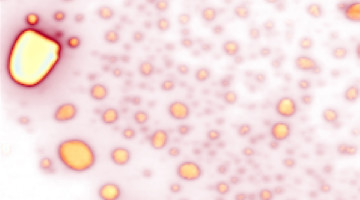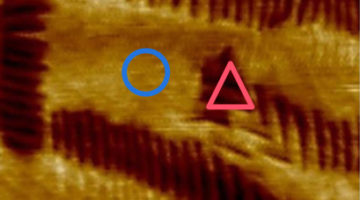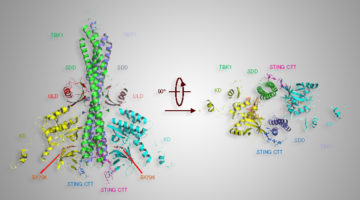Researchers characterized two highly unusual nickel-containing minerals, both unearthed in an ancient geological site in southern central Siberia. The findings extend our understanding of naturally occurring mineral species and varieties and provide useful insights into the environments leading to the formation of potentially valuable mineral ores. Read more »![]()
![]()
Renewed Prospects for Rechargeable Mg Batteries
Contrary to previous reports, it’s possible to create a rechargeable battery using magnesium ions if the electrode material is first conditioned at high temperature. With twice the charge of lithium ions, magnesium ions hold great promise as the basis for high-energy-density batteries suitable for use in electric vehicles. Read more »![]()
![]()
In Memoriam: Charles Fadley, Pioneer in X-Ray Photoelectron Spectroscopy
Charles “Chuck” Fadley, a pioneer in x-ray photoelectron spectroscopy, died at his home in Berkeley on August 1 after several years of treatment for cancer. He held the positions of distinguished professor emeritus of physics at UC Davis, and Advanced Light Source professor and senior faculty scientist at Berkeley Lab. He was 77. Read more »
Sulfur-linked cyanobiphenyl-based liquid crystal dimers and the twist-bend nematic phase
The synthesis and characterization of cyanobiphenyl-based liquid crystal dimers containing sulfur links between the spacer and mesogenic units are described. Resonant x-ray scattering studies of the twist-bend nematic phase at both the carbon and sulfur absorption edges were performed to determine the critical behaviour of the helical pitch at the transition to the nematic phase. Read more »
Tuning Material Properties with Laser Light
Researchers demonstrated that coupled electronic and magnetic properties in a material can be repeatably tuned using laser light. The results suggest the possibility of creating microelectronic devices that use a laser beam to erase and rewrite bits of information in materials engineered for random-access memory and data storage. Read more »![]()
![]()
Molecular Framework Imparts Stability to Reactive Catalyst
Researchers have shown that a rigid metal–organic framework (MOF) can be used to stabilize core regions of a reactive catalyst that has potential for use in artificial photosynthesis. The framework immobilizes and preserves key reactive intermediates and affords a clearer view of how the catalyst’s structure correlates with function. Read more »
How Light-Harvesting Bacteria Toggle Off and On
Researchers clarified the atomic-level mechanism that enables bacteria to switch light harvesting off and on in response to potentially damaging overexposure to light. The results could have long-range implications for artificial photosynthesis and optogenetics—the use of light to selectively activate biological processes. Read more »![]()
![]()
X-Ray Studies Key in Study Relating to Immune System-Signaling Protein
A grouping of amino acids—part of an important signaling protein, STING—plays an important role in activating the immune system. A study conducted through the Collaborative Crystallography program at the ALS confirmed how this part of the STING protein helps to bind a protein-modifying enzyme associated with autoimmune diseases and some cancers. Read more »
Shape transformation and self-alignment of Fe-based nanoparticles
Magnetic nanoparticles (MNPs) have widespread applications in biotechnology, materials science, engineering, and environmental studies. Thus, much attention has been paid to their controllable synthesis. Three new functions of iron-based nanoparticles are reported: shape transformation, oxidation prevention, and self-alignment. Read more »
A Frog Worth Kissing: Natural Defense Against Red Tide Toxin Found in Bullfrogs
Researchers have discovered how a protein produced by bullfrogs binds to and inhibits the action of saxitoxin, a deadly neurotoxin that causes paralytic shellfish poisoning. The findings could lead to the first-ever antidote for the compound, which blocks nerve signaling in animal muscles, causing death by asphyxiation when consumed in sufficient quantities. Read more »
- « Previous Page
- 1
- …
- 51
- 52
- 53
- 54
- 55
- …
- 83
- Next Page »









